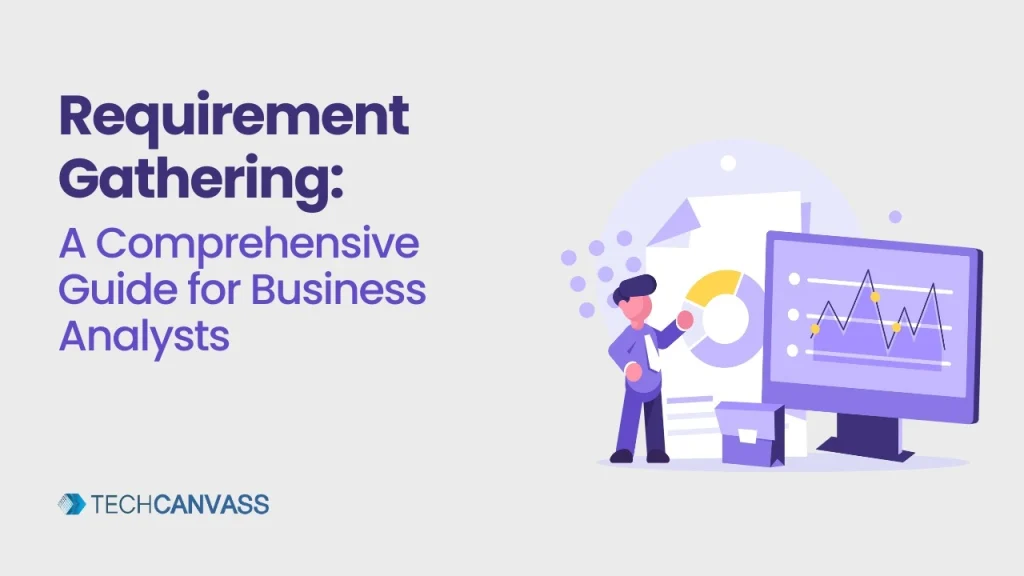A Business Analyst is required to gather requirements, serving as a bedrock to project success. This involves a full understanding of the needs and goals of a project or system to support its development and implementation in a way that is clear.
In this guide, let us take a quick look at a practical approach that one needs to adopt for requirement gathering.
Practical approach for requirement gathering
Here are some approaches that you can follow for requirement gathering.
Identify stakeholders
The first step towards requirement gathering is identification of project stakeholders. They include clients, users, managers among other relevant individuals with an interest in the outcome of the project. Understanding the views and expectations of each stakeholder is important for aligning project objectives with business goals.
Conduct interviews
Organize individual meetings with stakeholders so as to learn more about their requirements or expectations. Prepare your list of questions on an open-ended basis to enable detailed answers as well as unearth any hidden concerns or problems. These interviews then provide one with the perfect chance to get closer to stakeholders while also familiarizing oneself with their main issues or areas of interest.
Facilitate group discussions
Organize workshops or meetings to bring stakeholders together and foster collaboration. Group discussions enable stakeholders to share their perspectives, identify common goals, and brainstorm potential solutions collectively. This collaborative approach helps in resolving conflicts, generating new ideas, and building consensus among stakeholders.
Use brainstorming techniques
Employ brainstorming techniques to stimulate creativity and bring about different inputs from diverse participants. Participants should be encouraged to think creatively and give their views or suggestions on various matters freely. These sessions provide opportunities for exploring new ways of doing things.
Analyze existing documentation
Studying such documents like business processes, user manuals, and system specifications already available provides some insights into the current practices. Taking this analysis as a basis will help in gathering requirements easier while also setting up the project’s context. Moreover, it ensures that any collected requirement is rooted in existing business process architecture that supports company targets.
Observe workflows
Shadow users or stakeholders while they perform their tasks to gain firsthand insights into their workflows and processes. Observational techniques help in understanding their needs, pain points, and challenges in real-world scenarios. By witnessing the workflow in action, business analysts can identify areas for improvement and gather requirements that address specific user needs.
Prototype and iterate
Create prototypes or mockups used to visualize potential solutions and obtain feedback from stakeholders. Prototyping allows stakeholders to interact with the proposed solutions and provide valuable insights for refinement. The prototypes should be continuously refined based on stakeholder’s feedback so as to meet their needs effectively.
Document requirements
Use a structured approach when documenting these gathered requirements which may include functional/non-functional requirements, use cases, user stories and acceptance criteria etcetera. A clear document will help all involved parties understand what the project is about as well as the scope of its coverage. It also serves as a point of reference for developers during implementation.
Validate requirements
Verify the quality and completeness of the documented requirements by conducting stakeholder validation. Ask for their opinions, then take care of any inconsistencies or requirements gaps. Validation aids in risk mitigation and guarantees that the finished product lives up to stakeholder expectations.
Prioritize requirements
Work together with stakeholders in order to prioritize requirements based on importance, urgency, and practicability. It ensures that the most important aspects of a project are allocated scarce resources. In addition, it helps when it comes to making well-informed decisions as well as managing expectations of the stakeholders.
Communicate effectively
Maintain an open line of communication and transparency with stakeholders throughout the requirement gathering process. Give regular updates, seek clarifications where necessary, and ensure that everyone is in agreement about project objectives and requirements. Trust among parties involved can be built through effective communication thereby improving project success overall.
Conclusion
To sum up, eliciting requirements is an iterative process that calls for precision, cooperation, and clear communication. Through the implementation of diverse strategies and processes, business analysts can guarantee that the requirements acquired form a strong basis for the project’s accomplishment by adhering to an organized strategy.
Business analysts may significantly contribute to providing value to their organizations and stakeholders by becoming experts in requirement collection. In our Business Analyst course, we delve deeper into this process with case studies to enable you to be an efficient Business Analyst.





